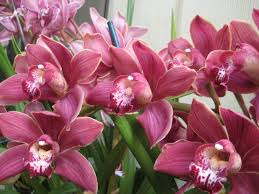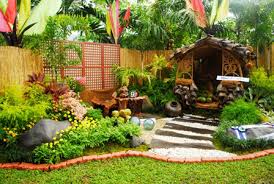During the summer months, ornamental plants are actively growing and would be severely injured by even the slightest frost. During the late summer and early fall, the plants must prepare themselves for winter through a process called cold acclimation. This process is initiated by the cooler temperatures and shorter daylengths that naturally occur at this time of the year.
Cold acclimation must occur in a timely fashion. If it occurs too early, the growing season of the plants will be shortened; if too late, they will be injured or killed by early frosts. Several factors including local weather conditions, plant selection, and maintenance practices during the growing season, can affect the timing and extent of cold acclimation of landscape plants.

Types of Damage and Conditions
Cold injury can occur on all parts of the plant including fruit, stems, leaves, trunk and roots. Typically, homeowners notice the cold damage first on the leaves and stems. Ice forms within the plant’s cells, the plant tissue dies, and leaves or stems become brownish-black and mushy. Cold acclimated plants can often withstand this type of ice formation. Plants that are not acclimated may sustain injury to the root system and may be severely damaged or killed. Sometimes this is not noticed until the plant fails to leaf out the following spring.
Windy conditions and accompanying cold also may cause plant damage through desiccation (evaporative water loss exceeds water absorption). This is the drying out of the plant. Marginal leaf scorching or leaf-tip burn is characteristic of this problem. Leaves may eventually turn completely brown and defoliate.
Damage to flower and leaf buds can occur during periods of low or fluctuating temperatures. This can lead to a reduction or total loss of blooms and damage of the foliage the following spring. Damage can be appraised by removing several buds and cutting them open to reveal their condition. If they appear green throughout, they are healthy; if they are partially brown or darkened, they have been injured.
One common problem that may occur during cold temperatures in woody plants is bark splitting. Bark splitting appears as loose bark in various areas on the trunk. As the bark exfoliates from dead tissue on the trunk, a frost canker can form. The canker may initially appear as a darkened, moist area. Bark splitting can cause structural damage and reduce the plant’s ability to transport nutrients and water. This can cause the death of the entire plant.
Although not common in Georgia, frost cracks on the trunks of woody plants can occur in sections of the state when plants are exposed to extremely cold temperatures. A frost crack is a long, deep, narrow crevice running up and down the trunk of a tree. As temperatures cool down, the temperature of the trunk drops quickly and the trunk contracts and may split.

Plant and Site Selection
The best way to prevent cold damage is to select a plant that can tolerate cold temperatures in your area. Georgia has different climatic zones, making it important to select plants that meet the minimum cold hardy requirements for your area. When selecting cold-tolerant plants, be sure to consider whether they can survive the summer heat in your area as well.
In addition to plant selection, proper site selection is essential. Assess your property to determine the location of the coldest and the warmest spots. During the winter, the coldest spots are often found on the north and northwest part of the property and in low areas where cold air settles. The warmest spots are usually on the southern part of the property.
Assessing the microclimates of your property is also important. Elevation, land form, soil properties, canopy cover, and proximity of structures or other plants determine a microclimate. Microclimates can be used to help protect plants by placing cold-sensitive plants near the part of the house that receives southern exposure or near larger plants or other structures.
Plant Nutrition
Maintaining proper plant nutrition increases a plant’s tolerance to cold injury. A plant that has been given the appropriate nutrition is healthier and more capable of acclimating to cold temperatures. Fertilizing plants at the proper time of year is also vital. Fertilizing plants in the fall (after August or September) with a fertilizer high in nitrogen can cause a flush of new growth that is more susceptible to cold temperatures. Soil sampling is the best method to determine your plants’ nutritional needs. Contact your local county agent for testing procedures.
Pruning and Transplanting
Pruning in late summer or early fall can cause new growth that is more susceptible to cold injury. Prune plants just prior to the appearance of new growth in late winter or early spring. Plants transplanted in late fall or early winter are also more susceptible to cold injury. These plants may not acclimate properly when exposed to low temperatures. Transplant in the early fall.
Canopies and Shade
Radiational freezes occur on calm, clear nights when temperatures drop because of heat loss from the surfaces of objects. Canopies help reduce radiant heat loss from the plants and soil by preventing heat loss to the atmosphere.
Plants that grow in shaded areas are less susceptible to winter desiccation, or drying out, than those grown in full sun. Plants that prefer full sun do not do well in the shade and will be unhealthy and less tolerant of cold temperatures if sited incorrectly.
Windbreaks
Windbreaks such as fences, buildings, evergreen plantings and temporary structures can help protect plants from cold injury. Windbreaks are most useful in reducing injury caused by cold winds and advective freezes (freezes that occur when temperatures drop because of the invasion of cold air masses into the area). They should generally be located anywhere cold winds are a problem; this is often on the northwest side of the planting.
Covering and Heating
Protect plants in containers either by placing them inside a protective structure (house, garage, greenhouse or shed) or by placing a protective covering over them. Container plants are especially susceptible to cold temperatures; their roots are more exposed because they are above ground. Plants with roots that are damaged by cold temperatures may not show immediate signs of damage; these plants will show signs of stress when temperatures rise and the demand for water from the roots is greater.
Push together container plants that are left outside and mulch or cover them to decrease heat loss from the sides of the containers. Wrap the bases of the containers in plastic, burlap or blankets to reduce heat loss.
Plants growing close to the ground are usually protected by heat radiating from the soil. Tall, more open plants do not receive as much radiating heat and are not as protected from the cold. Mulching helps reduce heat loss of the soil, thus minimizing temperature fluctuations. Protecting the roots of tender perennials may also be beneficial for them to survive the cold and come back in the spring.
Covering your plants with sheets, blankets or cardboard boxes helps protect them from low temperature injury. Plastic sheeting is not recommended; the plant can heat up rapidly as temperatures rise be damaged). Remove the cover and provide ventilation during the day to allow the release of the heat that is trapped by solar radiation. You can build a frame from PVC or similar material to keep the cover from coming in contact with the plant and possibly breaking leaves and stems.
Water Needs Before a Freeze
Plants continue to have water requirements during the winter months. Therefore, following sound irrigation practices is essential for a healthy and cold hardy plant. Check the water needs of plants prior to a predicted cold snap and water if necessary. Moist soil absorbs more heat, helping to maintain an elevated temperature around the plants. Mulching the base of plants helps to retain moisture.
After a Freeze
Cold damage may not be apparent in the plant for several days or weeks. To determine if your plants have been damaged by the cold, wait several days after a freeze and remove several buds, stems and leaves (if present) from the plant. Use a sharp knife or razor blade to cut a cross section of the bud’s top. If there is any discoloration in the bud, they have been damaged.
To determine if stems have been injured by the cold, peel the bark back to reveal the cambium layer (layer directly under the bark). If there is any black or brown discoloration, damage has occurred. Leaf damage may appear as obvious black or burnt foliage, usually occurring at the tip of the branches. Damage on buds, stems and leaves may be localized and the entire plant may not be affected.
Waiting to prune after freezes have passed will guard against removing living wood. If localized damage has occurred to the foliage or stems, prune several inches below the injured tissue. Although injured buds may reduce or eliminate flowering or leaf emergence in the spring, no pruning is necessary.
SOLVER CHEM
If you need any manufacturing formulas and production methods about
ornamental plant fertilizers,
CHEMICAL
FERTILIZERS
FORMULATIONS
ENCYCLOPEDİA
is enough.
This encyclopedia has many formulas about NPK fertilizers,NP fertilizers,liquid poliar fertilizers, powder fertilizers, granulas fertilizers, micro nutrients fertilizers,macro nutrients fertilizers,chelated fertilizers etc.
All chemical fertilizers in the encyclopedia are producible easily.You need no help and no technıcal support. The encyclopedia is enough to produce chemical fertilizers itself.
CHEMICAL
FERTILIZERS
FORMULATIONS
ENCYCLOPEDIA
is written clear and understandable.
RELATED TAGS: What is protection of ornamental plants, how to protect ornamental plants,why to protect of ornamental plants,methods of protection of ornamental plants,protection of ornamental plants from winter,how to protect ornamental plants from freeze,disadvantages of freeze for ornamental plants,how to care ornamental plants in landscape, caring of ornamental plants in landscape, importance of caring ornamental plants,making fertilizers to ornamental fertilizers,using fertilizers for ornamental plants,types of ornamental plant fertilizers,advantages of fertilizers of ornamental plants,why to use ornamental plants fertilizers,composition of ornamental plant fertilizers,importance of fertilizers for ornamental plants,how to make ornamental plants fertilizers,application of ornamental plants fertilizers,preparation of ornamental plants fertilizers,benefits of fertilizers for ornamental plants,usage of fertilizers of ornamental plants,when to use ornamental plants fertilizers,producing ornamental plant fertilizers, formulations of ornamental plants fertilizers,formulas of fertilizers for ornamental fertilizers, fertigation of ornamental plants,how to make fertilizing ornamental plants,how to use fertilization of ornamental plants,methods of fertigation of ornamental plants,fertilizing of ornamental plants.
ornamental plant fertilizers,
CHEMICAL
FERTILIZERS
FORMULATIONS
ENCYCLOPEDİA
is enough.
This encyclopedia has many formulas about NPK fertilizers,NP fertilizers,liquid poliar fertilizers, powder fertilizers, granulas fertilizers, micro nutrients fertilizers,macro nutrients fertilizers,chelated fertilizers etc.
All chemical fertilizers in the encyclopedia are producible easily.You need no help and no technıcal support. The encyclopedia is enough to produce chemical fertilizers itself.
CHEMICAL
FERTILIZERS
FORMULATIONS
ENCYCLOPEDIA
is written clear and understandable.
RELATED TAGS: What is protection of ornamental plants, how to protect ornamental plants,why to protect of ornamental plants,methods of protection of ornamental plants,protection of ornamental plants from winter,how to protect ornamental plants from freeze,disadvantages of freeze for ornamental plants,how to care ornamental plants in landscape, caring of ornamental plants in landscape, importance of caring ornamental plants,making fertilizers to ornamental fertilizers,using fertilizers for ornamental plants,types of ornamental plant fertilizers,advantages of fertilizers of ornamental plants,why to use ornamental plants fertilizers,composition of ornamental plant fertilizers,importance of fertilizers for ornamental plants,how to make ornamental plants fertilizers,application of ornamental plants fertilizers,preparation of ornamental plants fertilizers,benefits of fertilizers for ornamental plants,usage of fertilizers of ornamental plants,when to use ornamental plants fertilizers,producing ornamental plant fertilizers, formulations of ornamental plants fertilizers,formulas of fertilizers for ornamental fertilizers, fertigation of ornamental plants,how to make fertilizing ornamental plants,how to use fertilization of ornamental plants,methods of fertigation of ornamental plants,fertilizing of ornamental plants.
AGRICULTURE ENCYCLOPEDIAS AND CONTENTS


OPPORTUNITIES
1 ENCYCLOPEDIA 165 $
2 ENCYCLOPEDIAS 300 $
ORDER NOW
AGRICULTURE ENCYCLOPEDIAS AND VIDEOS


OPPORTUNITIES
1 ENCYCLOPEDIA 165 $
2 ENCYCLOPEDIAS 300 $
ORDER NOW
AGRICULTURE ENCYCLOPEDIAS AND VIDEOS
SOLVER CHEM

|
|

|
|

|
|
